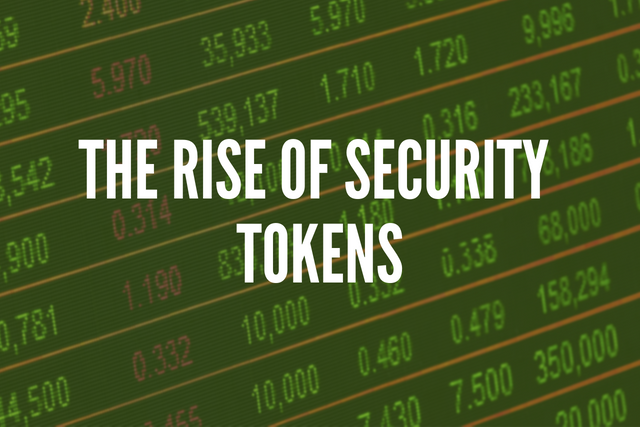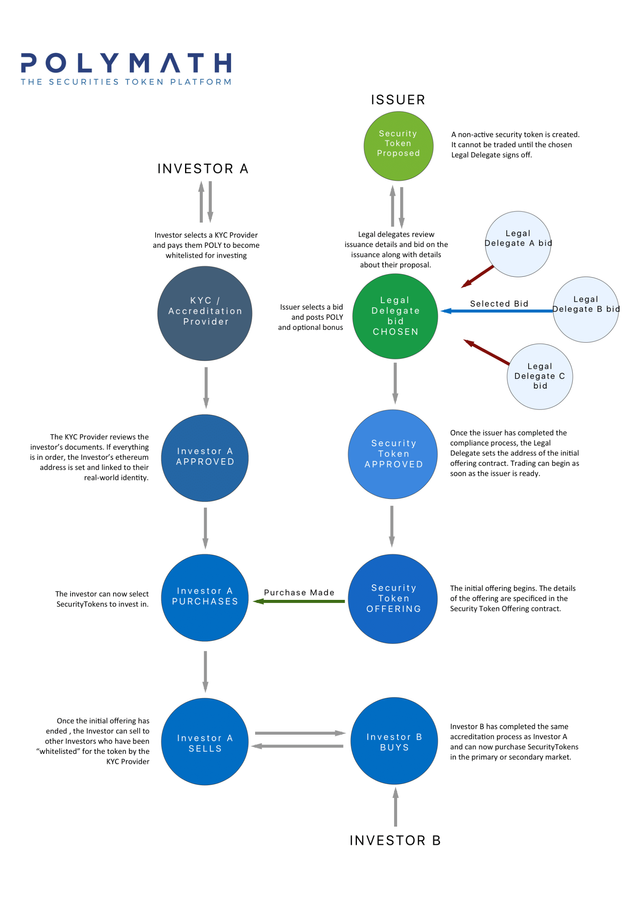The Rise of Security Tokens
original post can be found on my blog http://crocotrading.com/cryptocurrencies/ta-ethereum-is-the-bear-market-over/
What do the tokenization of a $30M real estate property in Manhattan, the first multi-million dollar artwork tokenization on the blockchain and the Blockchain Capital initial coin offering (ICO) have in common? Obviously, they are blockchain and crypto related news but more importantly, these are all examples of security tokens.
Security tokens VS Utility tokens
Before comparing security tokens and utility tokens, let's recap the differences between a token and a coin. I like the definitions used by coincentral which are clear and concise. They define a coin as any cryptocurrency that has its own separate, standalone blockchain and token as any cryptocurrency that is built on top of an existing blockchain.
Utility tokens are tokens that let you access a network, a platform, tokens that grand access to a product or a service. The key is that it is not a security interest. You do not own anything in the company and there is no real world asset that backs it.
Security tokens are tokens that are meant to act as digital versions of financial securities. They can represent traditional, private security interest. It can be equity, debt, derivatives, real estates, fine art,... Because the tokens are deemed a security, they are subject to regulation under security laws.
Advantages and challenges of security tokens
There are already plenty of well-written articles detailing the advantages and challenges of security tokens. Instead of repeating what is already well explained elsewhere, I will just mention different articles I would recommand you to read.
Lists of articles :
-
The Security Token Thesis (the best one in my opinion)
-
Prepare Yourself! The Security Token Tsunami Is About To Hit (a bit biased, too positive)
-
What the Heck Are Tokenised Securities? (quite negative but he made some good points)
The major challenge that companies involved in securities tokenization are facing is from a regulatory perspective. Security tokens are subject to the same laws than traditional securities. The different actors will have to find ways to comply with securities laws and at the same time provide easy-to-use worldwide services accessible to as many people as possible. If they can manage to make it almost as easy to trade a real estate security token as to trade bitcoin then I can't think of any reasons that could stop the growth of this market.
How does it work

The flowchart above comes from Polymath's whitepaper
Polymath is a project that plans to facilitate the primary issuance and to restrict the secondary trading of blockchain security tokens. Polymath uses a blockchain-based protocol that provides a suite of tools to coordinate and incentivize participants to collaborate and launch financial products on the blockchain.Despite showing specifically how it would work with the Polymath's platform, the flowchart describes rather well the different steps any security tokens would follow from issuance to secondary market. The key points security tokens would go through are issuance, legal compliance, security token offering (STO) and secondary market trading.
Key players
- Organizations raising capital in exchange of security tokens. Think about venture capital firms that need capital for a new fund, start-ups, growing companies, real estates holding companies. I purposely used the word "organization" because this is not limited to companies. For example, public sectors might use security tokens to issue bonds.
- Primary issuance companies. Their job is to help launch STO's from a technical and/or a legal standpoints.
- Exchanges that will enable secondary market trading.
- Blockchains on which security tokens and related protocols are based on. A protocol is standard set of programming “rules” that tokens must follow in order to access the service provided by the underlying protocol
Where are we now and where are we going?
We are right in the midst of a transitory period shifting from a pioneer era to a new phase where security tokens issuance will become way faster, cheaper, and simpler. Most of the major primary issuance companies and exchanges are in their latest development phase, necessary protocols (like the erc-1400) for the exchange and compliance of security tokens are being refined. I am expecting to see a massive growth of security token offerings (STO's) in 2019 and 2020 when primary issuance companies,exchanges and networks will be fully operational.
In a up-coming article, I will go through potential investments to benefit from the growth of this new industry.
Sources
https://hackernoon.com/10-important-things-to-know-about-security-tokens-fb4a0336a321
https://www.lawtrades.com/blog/blog-post/can-you-offer-tokens-to-non-accredited-investors-during-your-initial-coin-offering/
http://fortune.com/2018/05/18/security-token-harbor-ceo/
Steemit : https://steemit.com/@focuscrypto
Tradingview : https://www.tradingview.com/u/crocotrading/
Facebook : https://www.facebook.com/crocotrading/
Twitter : https://twitter.com/crocotrading
Legal disclaimer : Opinions, markets informations, analyses and any statements made on crocotrading.com website constitute on no account investment advices. The information provided on this website and any accompanying material is for informational purposes only. It should not be considered financial or investment advice of any kind. One should consult with a financial or investment professional to determine what may be best for your individual needs.